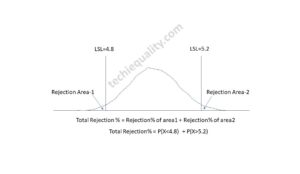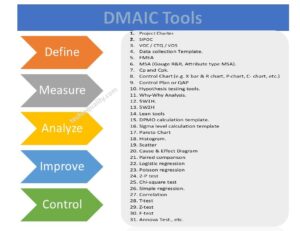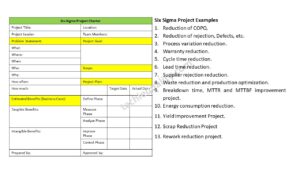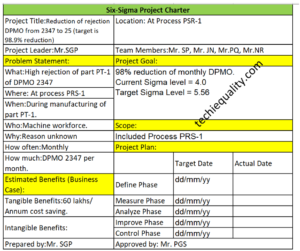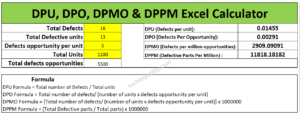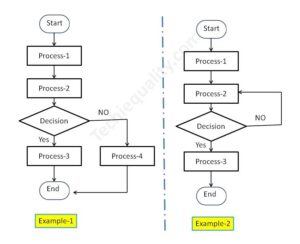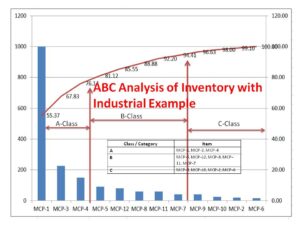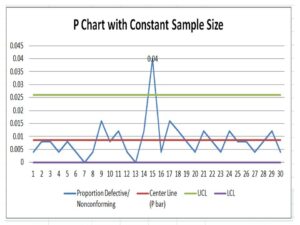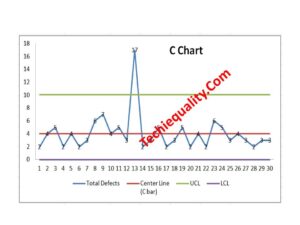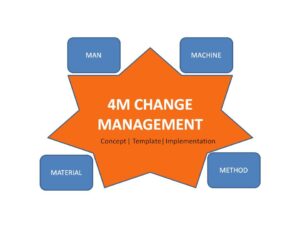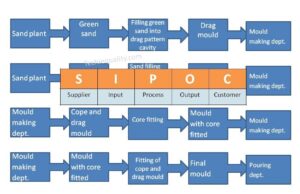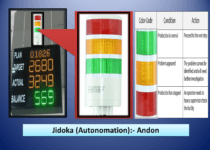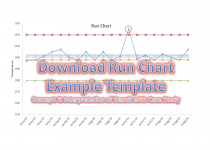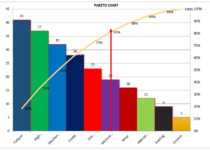Gage R and R |Attribute type MSA |How to do MSA Study | Acceptance Criteria
Gage R and R |Attribute type MSA |How to do MSA Study | Acceptance Criteria:
Hi readers! Today we will be discussing here on Measurement System Analysis. Basically on variable (Gage R and R) and attribute type MSA, how to do both MSA studies, and finally on the interpretation of result with manufacturing example.
Measurement System Analysis (Variable type MSA):
MSA is nothing but it’s a Measurement System Analysis. And also it is one of the AIAG core tools. As you know how important the process data that you are measuring, monitoring, and collecting for analysis. If unfortunately, those data may be wrong due to instrument error or human (appraisal) error then your whole analysis and decision will be incorrect. Some people think that we are doing calibration of our instrument, so why will we do the Variable MSA of the instrument?
Hence I’m trying to illustrate why it is required, suppose you are measuring the length of a product and during an inspection of the product inadvertently the vernier caliper has fallen on the ground and you used it in next time because you know your vernier caliper is calibrated and within the period. However, the condition of the instrument and instrument error may have varied after this incident happened. So we should analyze the gage repeatability and reproducibility of the instrument and need to make the decision accordingly. Similarly, in dusty and high moisture environments your instrument’s reading may be incorrect (more instrument error) due to bad conditions. So it is very important to do the variable type MSA on a periodic basis considering various factors, customer requirements, and standard requirements, etc.
Attribute type MSA:
Similarly, we have to give attention to those who are doing inspection because the report of the inspection may be incorrect due to human error. For example, an inspector was doing a visual inspection of the colour box. And he accepted the lot of boxes and allowed to next process for operation. But the line manager has rejected the box due to a mismatch in the colour w.r.t approved master sample. When a quality manager tried to find out the cause of the incident later, he came to know that the person involved in the visual inspection was colour-blind. So it’s clearly indicating that the performance of the inspector was very low and miss-alarm & false-alarm was very high. Hence to prevent such types of mistakes we should periodically do the Attribute type of analysis to know the performance level of appraisal. A detailed interpretation is given below.
Below are some factors that may cause human error but these are not limited;
- Vision problem
- By following the wrong methods.
- Insufficient knowledge.
How to do the Variable type MSA (Gauge repeatability & reproducibility)?
Step -1: First of all prepare the master calendar of MSA considering all instruments.
Step-2: List out the names of appraisers.
Step 3: E.g.- Every individual appraiser should measure the 10 samples with 3 trials, so in total there will be 30 measurements of individuals and 90 measurements of three appraisers.
Step-4: Calculate the % Gage R&R and “ndc” (No of distinct categories).
How to do the attribute type MSA?
Step-1: E.g.-Need to have 50 references and at least 10 bad parts. (At least 20 to 30 % of total reference-general practics).
Step-2: e.g.-Do a study and record the data of 50 parts with 3 trials in individuals of three appraisers.
Step-3: Calculate the % of Effectiveness, Miss-alarm, and false alarm of all three appraisers.
Interpretation of result:
Both the type of MSA result needs to be evaluated to determine, whether the measurement device is accepted or not. The acceptability criteria may depend on several factors but the general guidelines of acceptance criteria of both MSA (Variable and Attribute type) are given below.
General Acceptance Criteria of Gage R and R (Variable type MSA):
- Generally, the measurement device to be acceptable when GR&R will be < 10% or NDC (Number of distinct categories) ≥ 5.
- May be acceptable for some applications when Gage R&R will be 10% to 30%, during the decision making you should consider factors like the importance of application measurement, cost of rework, repair, and cost of the measurement device. But you should take approval from your customer as well.
- The measurement device to be unacceptable when the GRR will be >30%.
General Acceptance Criteria of Attribute type MSA:
- The decision to be an acceptable for the appraiser when Effectiveness ≥90% & Miss alarm ≤2% & False alarm ≤5%.
- Marginally acceptable for the appraiser when Effectiveness ≥80% & Miss alarm ≤5% & False alarm ≤10%.
- Unacceptable for the appraiser when Effectiveness <80% & Miss alarm >5% & False alarm >10%.
- If you are considering the Kappa value to make a decision then, value >0.75 indicate good to excellent agreement.
Note: the above criteria are the general guideline for acceptability but you may consider the other factors during decision-making, for example, measurement system environment, Purpose, application, Cost of the measurement device, Cost of rework, cost of repair, total variation, etc.
Free Templates / Formats of QM: we have published some free templates or formats related to Quality Management with manufacturing / industrial practical examples for better understanding and learning. if you have not yet read these free template articles/posts then, you could visit our “Template/Format” section. Thanks for reading…keep visiting techiequality.com
Useful Post:
How to do data analysis by excel sheet? Step by step guides
Types of Fishbone Diagram |Dispersion Analysis |Enumeration |Process Classification
Dispersion Analysis Cause & Effect Diagram Template |Download Excel Format
Strategies for Manufacturing Process Improvement |11+ Strategies
More on TECHIEQUALITY
Popular Post:
